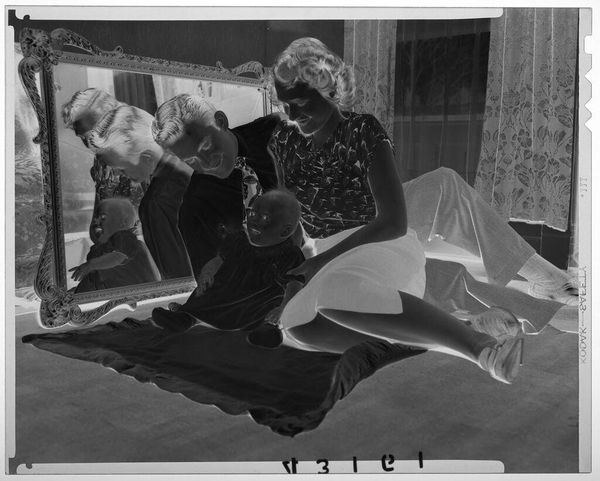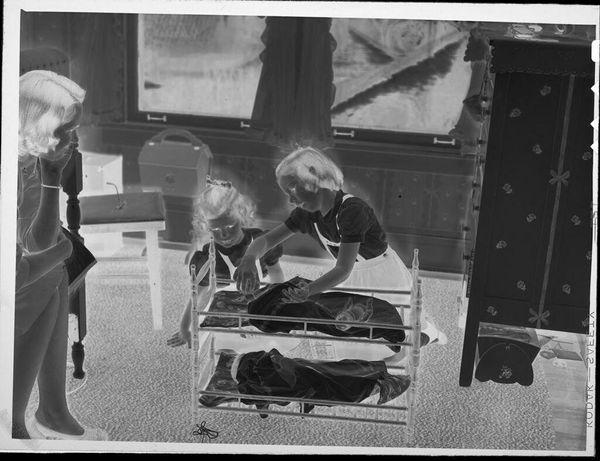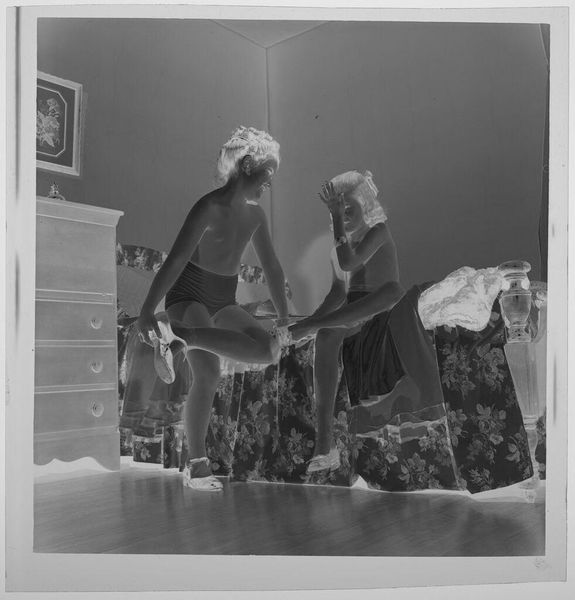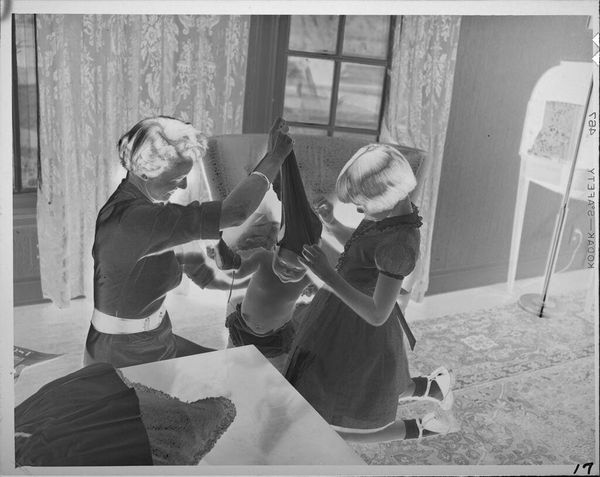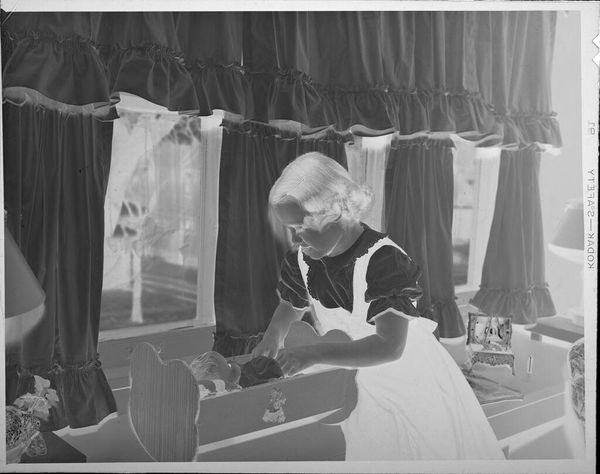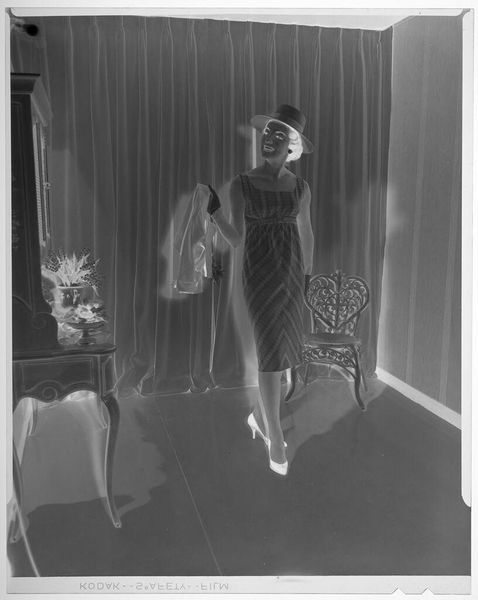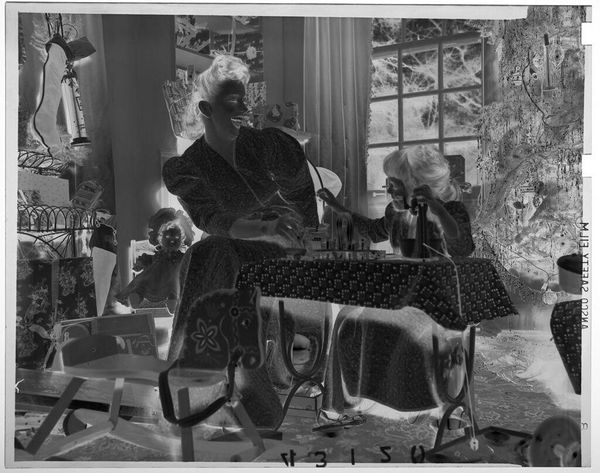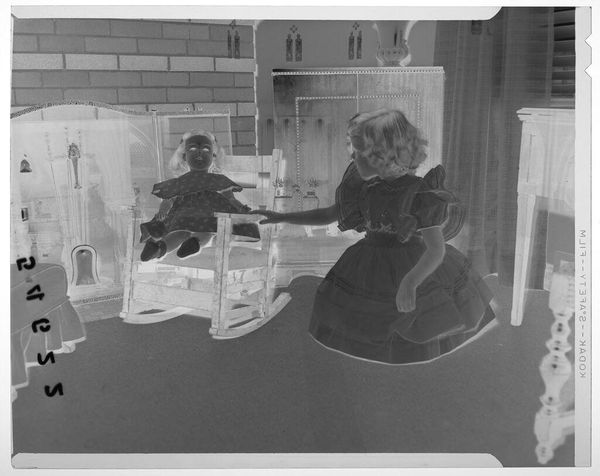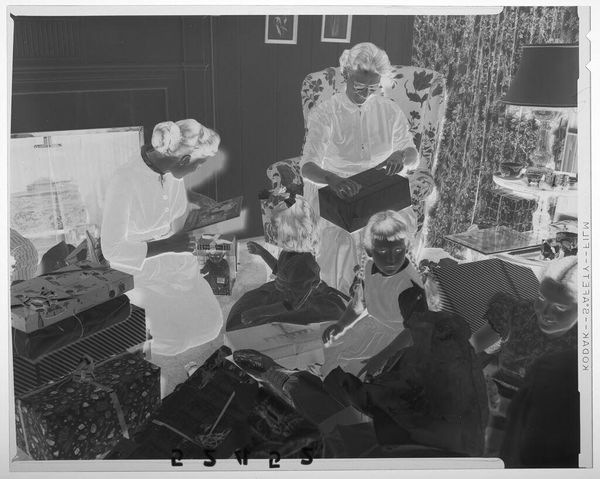
Untitled (woman and baby looking in large mirror while sitting on blanket on floor) 1947
0:00
0:00
Dimensions: image: 10.16 x 12.7 cm (4 x 5 in.)
Copyright: CC0 1.0
Editor: We have an intriguing photograph here at the Harvard Art Museums, an untitled work by Martin Schweig, showing a woman and child looking into a mirror. The composition is striking, and the negative presentation certainly changes the way we read it. What do you see in this piece? Curator: The inverted tones prompt an examination of light and shadow as formal elements, irrespective of representational content. Note how the ornate frame acts as a compositional anchor, drawing the eye back into the interplay between surface and depth. The mirror is not just a reflective device but a framed picture within the picture. Editor: So, it's less about the subjects and more about how they're presented? Curator: Precisely. The formal elements – the framing, the tonal inversions, the planar relationships – these are the primary carriers of meaning. It invites us to consider photography as a construction, not a mere reflection. Editor: That gives me a lot to consider when viewing this piece. Thanks for the insight. Curator: My pleasure. Focusing on these formal relationships, we move beyond the surface to appreciate the photographer's visual intelligence.
Comments
No comments
Be the first to comment and join the conversation on the ultimate creative platform.
